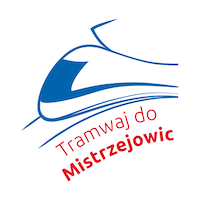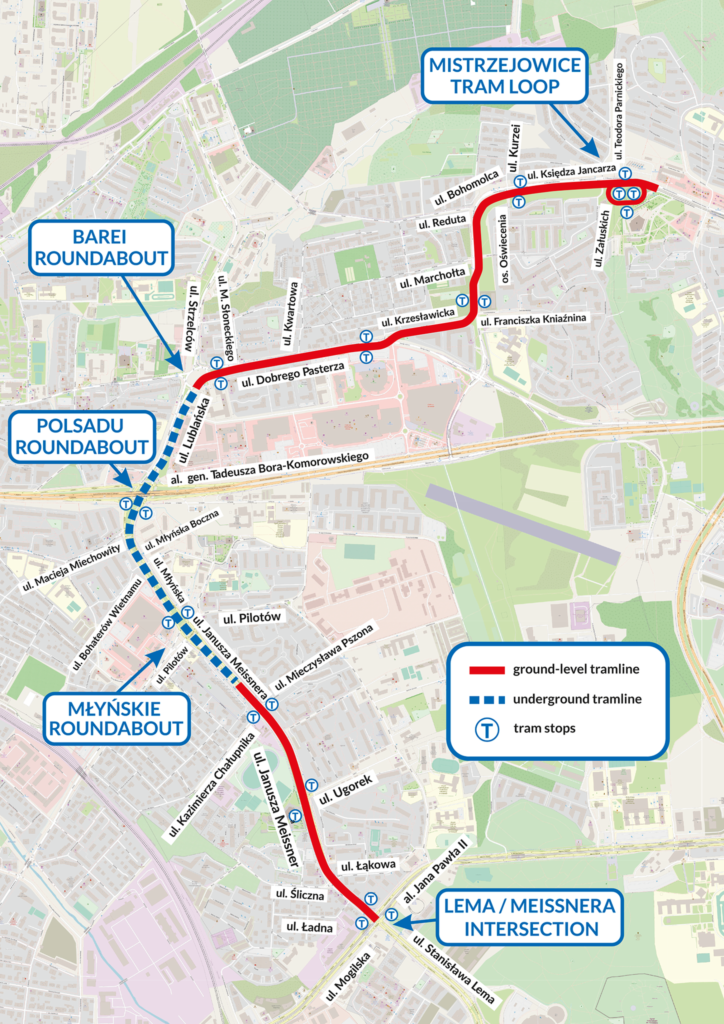The tramway to Mistrzejowice is a project of strategic importance for the city’s development. The planned tram route will connect two existing lines in the northern part of Krakow, in District III Prądnik Czerwony and District XV Mistrzejowice. These districts are a residential area of the city with many offices, shops and heavy traffic.
The aim of the project is to reduce car traffic and improve air quality in the inner city and reduce greenhouse gas emissions in the city by providing alternative transport options.
The first stage of public consultation took place at an earlier stage of planning the project – in 2015. At that time, it was decided to choose an approximately 4.5-kilometers-long route, running almost its entire length along existing streets, crossing three roundabouts that are important for Krakow’s transport system and joining the existing track to Nowa Huta at the junction of Meissnera Street and Jana Pawła II Avenue.
On 21 December 2020, a public-private partnership agreement was signed between the City of Krakow and the Private Partner for the design and construction of the tram line, together with its operation and maintenance. The route of the line was reviewed and modified in connection with the construction of the tunnel and optimisation of its length in order to reduce land occupation and improve traffic flow through the Polsad roundabout.
A second phase of public consultation took place in 2021. – both in the form of in-person (with the sanitary regime in place at the time), online and on-call telephone consultations by the designer. The final stage was public consultation as part of the issuing of the environmental decision.
The application for a Road Construction Consent (in polish: Zezwolenie na Realizację Inwestycji Drogowej – ZRID) was submitted to the Municipality of Krakow in March 2022. On 9 May 2023, the ZRID decision was issued and construction has been underway since 3 July. The investment is scheduled to be completed by the end of 2025.



